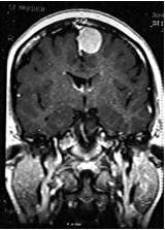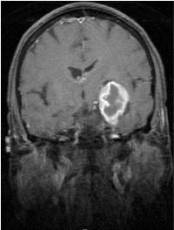Meningioma Grading

Meningioma is the most common type of primary brain tumor, accounting for approximately 30 percent of all brain tumors. It originates in the meninges, the outer three layers of protective tissue located between the skull and the brain.
The severity of a meningioma is determined by its grade (classification) and location. Meningioma grading (I to III) is based on the appearance of the tumor cells under a microscope. Grade I is the most common type of meningioma and is considered benign. Grade III is the most aggressive form and is considered malignant.
The following guide outlines the meningioma grading system:

- Grade I (benign). This noncancerous type of brain tumor grows slowly and has distinct borders. Approximately 78 percent to 81 percent of meningiomas are benign (noncancerous).
- Grade II (atypical): Approximately 15 percent to-20 percent of meningiomas are atypical, which means that the tumor cells do not appear typical or normal. Atypical meningiomas are neither malignant (cancerous) nor benign, but may become malignant at some point. Grade II meningiomas also tend to recur and grow faster.
- Grade III (malignant or anaplastic): This aggressive type of brain tumor tends to invade the parts of the brain that are closest to the tumor. Approximately 1 percent to 4 percent of meningiomas are grade III (cancerous).





